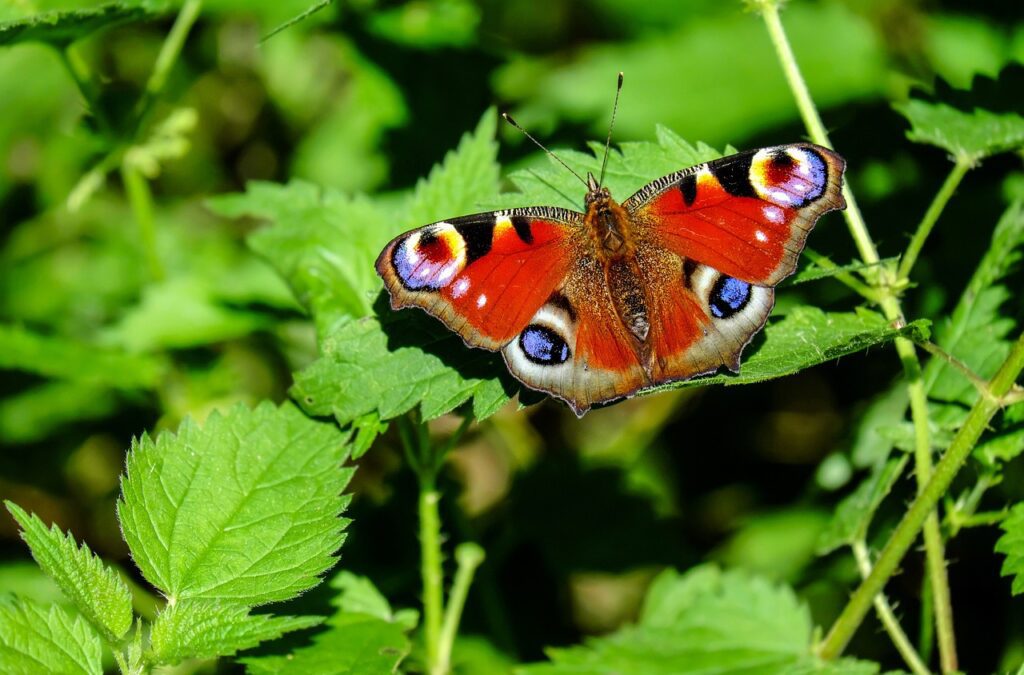With the Big Butterfly Count currently on and ending August 10, I’ve noticed more butterflies this year, it might be because I’ve more nettles in the garden but here are some plants that our favoured by our most common butterflies.
This citizen science initiative aims to assess the health of the environment by tracking butterfly and day-flying moth populations. Last year’s count revealed a significant decline in numbers, prompting Butterfly Conservation to declare a “butterfly emergency”. The results from the 2024 count were the lowest in the survey’s history.
Key Points:
- Current Count: The Big Butterfly Count 2025 is happening now.
- Purpose: It’s a citizen science project to monitor butterfly and moth populations as indicators of environmental health.
- 2024 Results: Last year saw a significant decline, with the lowest numbers recorded since the survey began.
- Declines: More than half of UK butterfly species are in long-term decline, and over a third are experiencing significant decreases, according to the UK Centre for Ecology & Hydrology.
- “Butterfly Emergency”: Due to the low numbers, Butterfly Conservation declared a butterfly emergency in 2024.
- How to Participate: Individuals can participate by downloading the free Big Butterfly Count app or visiting Butterfly Conservation’s website.
- Importance: Butterflies are important indicators of the health of our environment, and their decline highlights wider environmental issues.
- Here are the favoured plants for the best loved UK butterflies;
- Red admiral – mainly common nettle (Urtica dioica).
- Peacock – mainly common nettle (Urtica dioica)
- Brimstone – buckthorn (Rhamnus cathartica); alder buckthorn (Frangula alnus).
- Painted lady – thistles (Cirsium spp. and Carduus spp.); mallows (Malva spp.); common nettle (Urtica dioica), viper’s-bugloss (Echium vulgare)
- Comma – common nettle (Urtica dioica); hop (Humulus lupulus); elm (Ulmus spp.)
- Green-veined white – many plants including garlic mustard (Alliaria petiolata); cuckooflower (Cardamine pratensis); hedge mustard (Sisymbrium officinale); watercress (Rorippa nasturtium-aquaticum); charlock (Sinapis arvensis); large bittercress (C. amara); wild cabbage (Brassica oleracea); wild radish (Raphanus raphanistrum); nasturtium (Tropaeolum majus).
- Small tortoiseshell – mainly common nettle (Urtica dioica)
- Large white – mainly cultivated cabbage, Brussels sprouts, broccoli etc (Brassica oleracea); oil seed rape (Brassica napus); nasturtium (Tropaeolum majus); wild mignonette (Reseda lutea); sea kale (Crambe maritima)
- Small white – mainly cultivated cabbage, Brussels sprouts, broccoli etc (Brassica oleracea); nasturtium (Tropaeoleum majus)
- Orange-tip (rarer in gardens) – cuckooflower (Cardamine pratensis); garlic mustard (Alliaria petiolata)
- Speckled wood – false brome (Brachypodium sylvaticum); cock’s-foot (Dactylis glomerata); Yorkshire fog (Holcus lanatus); common couch (Elytrigia repens)
- Meadow brown – grasses including fescues (Festuca spp); bents (Agrostis spp); meadow-grasses (Poa spp); cock’s-foot (Dactylis glomerata); downy oat-grass (Helictotrichon pubescens); false brome (Brachypodium sylvaticum).
- Small copper – common Sorrel (Rumex acetosa) and sheep’s sorrel (R. acetosella) are the main foodplants. Broad-leaved dock (R. obtusifolius) may be occasionally used
- Holly blue – many shrubs including holly (Ilex aquifolium); ivy (Hedera helix); spindle (Euonymus europaeus); dogwoods (Cornus spp); snowberries (Symphoricarpos spp); gorse (Ulex spp); bramble (Rubus fruticosus)
- Common blue – mainly common bird’s-foot trefoil (Lotus corniculatus); greater bird’s-foot trefoil (L. pedunculatus); black medick (Medicago lupulina); common restharrow (Ononis repens); white clover (Trifolium repens); lesser trefoil (T. dubium).
